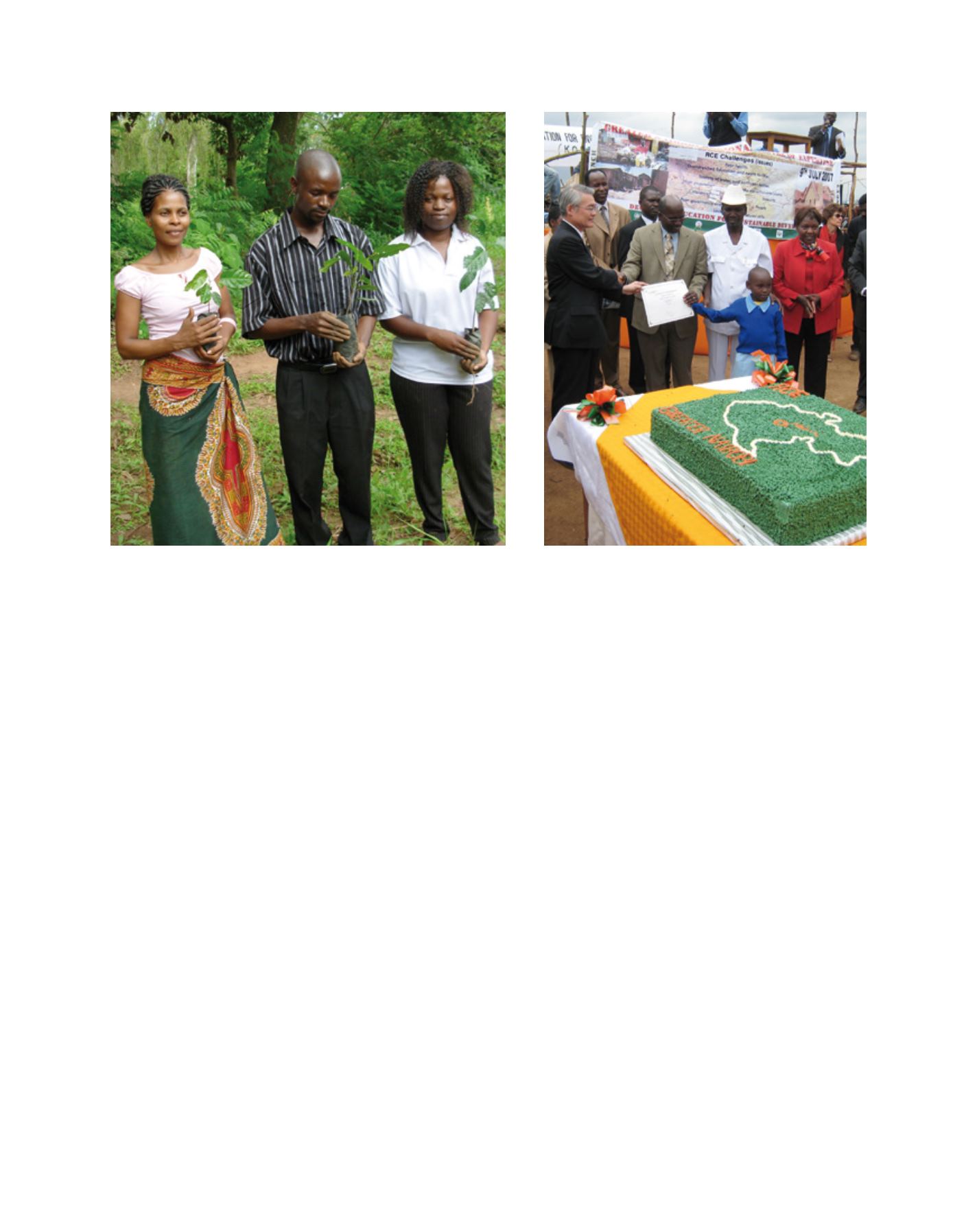

active partners. For example, many Indian RCEs, led
by NGOs, have reported increased interest from insti-
tutions of higher education in working collaboratively.
The legitimacy that comes with the RCEs’ recognition
by the UNU could attract, as at RCE Saskatchewan, the
interest of influential partners and decision makers.
The RCE initiative contributes to the DESD by creat-
ing platforms for local actors to articulate a global vision
of ESD in local terms. Not only does it bring together
stakeholders across knowledge and sectoral boundaries
in a particular region, it also brings together ESD stake-
holders across geographic boundaries. The expansion
of a global network of RCEs will be a valuable visible
output of the DESD, with the number of RCEs serving
as an indicator of the vitality of local initiatives for ESD.
Exciting prospects
The growing number of RCEs indicates recognition of
the RCE strategy’s potential to mobilize regional stake-
holders, to give educators a voice, and to explore new
practices in transformative education and action research
locally and internationally. Shaped by the visions of learn-
ing and sustainability of many stakeholders, RCEs offer a
rich opportunity for learning and experimentation. With
many ESD and SD questions still unanswered, the part-
ners collectively define and redefine regional challenges,
innovate and test ESD and SD solutions, and develop
joint resources and strategies. A giant social experiment
is thus unfolding all over the world.
Co-author: Zinaida Fadeeva
suppliers and schools worked on the development of a new organic
food supply chain, parents and pupils learned about SCP and food at
home, using specially produced materials. Conferences and training
of teachers focused on food and sustainability. The process of certify-
ing Malmö as a Fair Trade city contributed to multi-level actions and
learning for SCP.
RCE contribution to the DESD
As a global multi-stakeholder initiative for ESD in the context of
the DESD, the RCE movement became a unique experiment in
the mobilization of ESD partners at both local and global levels.
Five years of experience point to a variety of value-added functions
that RCEs bring to the regions. RCEs are seen as a meeting point
for partners, a clearing house, a knowledge broker, a platform for
information exchange, a community of practice, a mechanism for
multi-stakeholder social learning and a learning network.
In some regions, where collaborative ESD and SD activities were
not well established, for example in Kyrgyzstan, RCEs encouraged
ESD partnerships while giving the stakeholders legitimacy and an
opportunity to seek additional political and resource support.
Regions rich in ESD experience, as in the case of the home region
of RCE Rhine-Meuse, benefited from the coordination of ongoing
partnerships provided by RCEs. The RCEs brought together histor-
ically competing partners, as at RCE Saskatchewan, and facilitated
the opening of spaces for cultural dialogue, as at RCE North East,
UK. In keeping with the RCE concept of bridging the gaps between
different levels of formal education as well as between partners
representing informal and non-formal education, they created or
reinforced horizontal, vertical and lateral linkages among the part-
ners. In doing so, RCEs allowed those partners that were not yet
engaged in ESD to join the learning communities, as well as already
[
] 142
Students of environmental science plant trees, Zomba, Malawi
Launching ceremony of RCE Greater Nairobi
Image: © RCE Zomba
Image: UNU-IAS
















